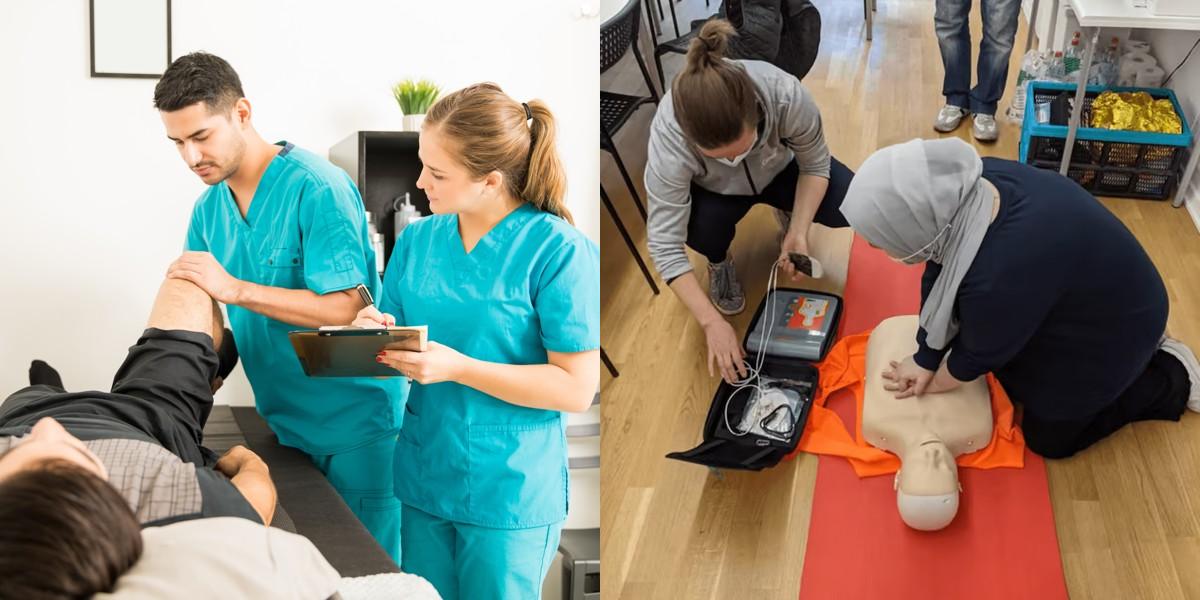Chiropractic Assistant vs CPR-BLS

Key Points:
- Chiropractic Assistants support chiropractors, while CPR-BLS (Cardiopulmonary Resuscitation and Basic Life Support) providers offer emergency medical care.
- Chiropractic Assistants typically earn less than CPR-BLS providers.
- Chiropractic Assistants are in demand in chiropractic clinics, while CPR-BLS providers are needed in various healthcare settings.
- Chiropractic Assistants require on-the-job training, while CPR-BLS providers need in-person certification courses.
- Chiropractic Assistant training is usually free, while CPR-BLS courses can cost a few hundred dollars and take a few hours to complete.
When it comes to choosing a vocational training program, it's important to consider your interests, skills, and career goals. Two popular options in the healthcare field are becoming a chiropractic assistant or obtaining CPR-BLS certification. Both paths offer opportunities to work in a medical setting and make a difference in people's lives. In this blog post, we will explore the roles of a chiropractic assistant and a CPR-BLS certified professional, highlighting the differences between the two and providing insights into the education, training, career outlook, and salary for each.
Chiropractic Assistant vs CPR-BLS: Career Outlook and Salary
Chiropractic Assistant:
- According to the Bureau of Labor Statistics, the employment of medical assistants, which includes chiropractic assistants, is projected to grow 19% from 2019 to 2029, much faster than the average for all occupations.
- The median annual wage for medical assistants was $35,850 in May 2020, with the highest 10% earning more than $51,850.
CPR-BLS Certified Professional:
- As CPR-BLS certification is often a requirement for many healthcare professionals, the demand for certified professionals remains steady.
- The salary for CPR-BLS certified professionals varies depending on their specific role within the healthcare field. For example, an emergency medical technician's median annual wage was $36,650 in May 2020, while a registered nurse's median annual wage was $75,330.
Final Thoughts
Choosing between a career as a chiropractic assistant and obtaining CPR-BLS certification ultimately depends on your interests, skills, and long-term career goals. If you enjoy administrative tasks and working in a chiropractic office, becoming a chiropractic assistant may be the right path for you. On the other hand, if you have a passion for providing immediate lifesaving care during emergencies, obtaining CPR-BLS certification can open doors to various healthcare settings.
Consider your preferences, strengths, and the level of training required for each path before making a decision. Remember to research the specific requirements and opportunities in your area to ensure you are well-prepared for your chosen career path.
Dreambound ensures accessibility to its educational programs by offering them in diverse locations. For a detailed exploration of the exciting opportunities within these two vocations, we encourage you to visit:

Winlynd Caballero is a member of Dreambound's Sales team. She helps in handling the company's finullcial transactions, generating reports, and school sales. Beyond her responsibilities in the realm of numbers and business, Winlynd finds herself deeply immersed in a world of art and music.




